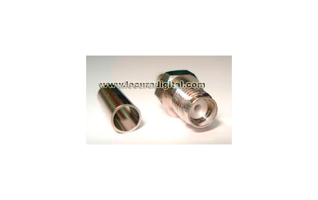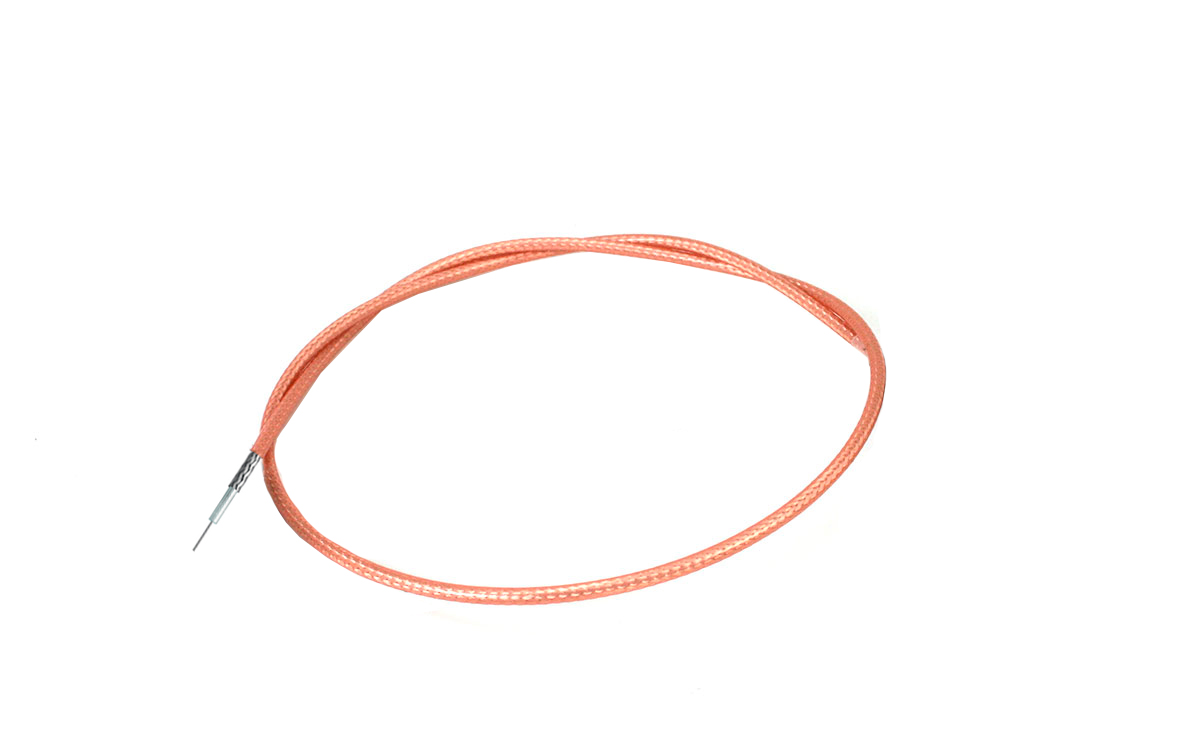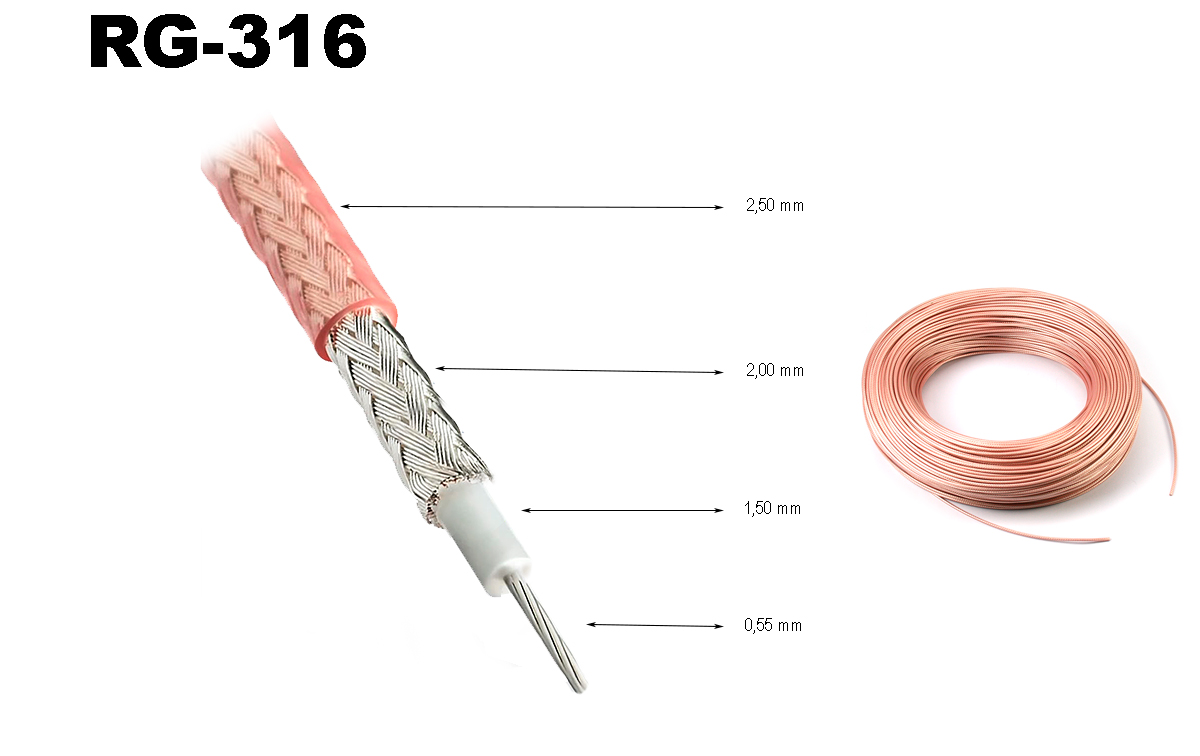
RG-316 Coaxial cable, outer diameter 2.5 mm, with transparent TEFLON PTFE cover. Shielding suitable for demanding applications with silver-plated copper braid and live conductor diameter 0.6 mm. Valid for Wi-Fi technology, Telecom Applications more Manufacturer: maas Reference RG316U
RG-316 coaxial cable is a type of high-quality cable used in various demanding applications due to its features and benefits: Outer Diameter and Material: RG-316 cable has an outer diameter of 2.5mm, making it slim and suitable for applications where space is limited. In addition, it is covered with a transparent sheath of TEFLON PTFE (polytetrafluoroethylene), a material known for its high resistance to extreme temperatures and its low dielectric loss. Shielding and Conductor: Features a silver-plated copper braid shield that provides excellent protection against external noise and interference, ensuring reliable signal transmission. The center conductor has a diameter of 0.6 mm, which contributes to low signal loss and transmission efficiency. Applications: Due to its characteristics and specifications, the RG-316 cable is valid for a wide range of applications, such as Wi-Fi technology, telecommunications, laboratory, radio communication, interconnections and jumpers. It is also suitable for applications where an impedance of 50 ohms is required. Regulatory compliance: The RG-316 cable, which guarantees its quality and compliance with specific standards, complies with the MIL-C 17F regulation Advantages and benefits: Among the main advantages and benefits of the RG-316 cable are low losses, which which ensures a more efficient signal transmission; its super flexibility, which makes it easy to install and handle in confined spaces; and its resistance to high temperatures, which makes it suitable for applications in demanding environments. Furthermore, its maximum frequency of 0 to 3 GHz makes it suitable for high-frequency applications.
RG-316 coaxial cable is a high-quality option for applications that require low signal loss, protection against interference, and high resistance to extreme temperatures. Its versatility makes it suitable for a wide variety of uses, from wireless communications to laboratory and radio communication applications.
Here is a summary of the maximum attenuation values for different frequencies in a coaxial cable. Attenuation is the reduction in strength of a signal as it travels through the cable over a certain distance. Attenuation units are typically measured in decibels (dB) per 100 feet or 100 meters, indicating how much the signal weakens over that distance.
At 10 MHz: 8.9 dB/100 meters
At 50 MHz: 18.4 dB/100 meters
At 100 MHz: 27.2 dB/100 meters
At 200 MHz: 36.1 dB/100 meters
At 400 MHz: 54.8 dB/100 meters
At 700 MHz: 74.8 dB/100 meters
At 900 MHz: 86.3 dB/100 meters
At 1000 MHz (1 GHz): 93.8 dB/100 meters
At 3000 MHz (3 GHz): 174.9 dB/100 meters
As the frequency increases, the attenuation in the cable also increases. This means that higher frequencies experience more significant signal loss over the same distance. This property is an important consideration in the design of communication systems, especially for high-frequency applications such as Wi-Fi, cellular networks, and microwave communications. Cable specifications with lower attenuation values are generally preferred for long distance or high frequency applications to maintain signal strength and reduce signal degradation
Sale by meters, the price is for 1 meter. You can order as many meters as you want.
In the basket, indicate the quantity you want: Example 12 is 12 meters of RG213 cable.![]()

